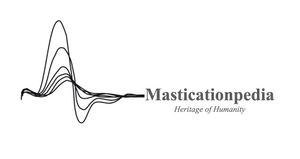Difference between revisions of "Book index"
| Line 37: | Line 37: | ||
| | | | ||
|- | |- | ||
| | |1 | ||
|<small>Logic of medical language</small> | |||
| | | | ||
| | | | ||
| Line 48: | Line 49: | ||
| | | | ||
|- | |- | ||
| | |1.1 | ||
|<small>The logic of Classical Language</small> | |<small>The logic of Classical Language</small> | ||
| | | | ||
| Line 61: | Line 62: | ||
| | | | ||
|- | |- | ||
| | |1.1 | ||
|<small>The logic of the Probabilistic language</small> | |<small>The logic of the Probabilistic language</small> | ||
| | | | ||
| Line 74: | Line 75: | ||
| | | | ||
|- | |- | ||
| | |1.1 | ||
|<small>Fuzzy language logic</small> | |<small>Fuzzy language logic</small> | ||
| | | | ||
| Line 87: | Line 88: | ||
| | | | ||
|- | |- | ||
| | |1.1 | ||
|<small>System logic</small> | |<small>System logic</small> | ||
| | | | ||
| Line 100: | Line 101: | ||
| | | | ||
|- | |- | ||
| | | | ||
|<small>The Complex Systems</small> | |||
| | | | ||
| | | | ||
| Line 112: | Line 114: | ||
| | | | ||
|- | |- | ||
| | | | ||
|<small>Logic of medical language: Introduction to quantum-like probability in the masticatory system</small> | |||
| | | | ||
| | | | ||
| Line 124: | Line 127: | ||
| | | | ||
|- | |- | ||
| | | | ||
|<small>Conclusions on the status quo in the logic of medical language regarding the masticatory system</small> | |||
| | | | ||
| | | | ||
| Line 340: | Line 344: | ||
| | | | ||
|} | |} | ||
</center> | </center> | ||
---- | ---- | ||
Revision as of 14:55, 16 January 2024
As can be seen from the 'Book Index', the scientific editorial work is what that Gianni Frisardi, who gave the idea of founding Masticationpedia, would have liked to find 40 years ago when he began to take an interest in 'Masticatory Rehabilitation'. At the same time, the project is also a pharaonic adventure given the vastness of the topics covered.
This requires the participation of the whole 'Scientific Community' to hope to reach the paradigmatic conclusion of normalizing the 'Masticatory function' to the Central Nervous System responses rather than to the gnathological axioms.
For these reasons the work has been divided according to Kuhn's phases which are most decisive for the paradigmatic changes in science which are, in fact, phase 2 which corresponds to Normal Science; phase 4 which corresponds to the Crisis of the Paradigm and phase 5 which kicks off the scientific revolution called Extraordinary Science.
| NORMAL SCIENCE | CRISIS OF PARADIGM | EXTRAORDINARY SCIENCE | |||||||||
|---|---|---|---|---|---|---|---|---|---|---|---|
| Introduction | Research Diagnostic Criteria (RDC) | ||||||||||
| 1 | Logic of medical language | Masticatory cycles | |||||||||
| 1.1 | The logic of Classical Language | Jaw opening width | |||||||||
| 1.1 | The logic of the Probabilistic language | Speed of mandibular movement | |||||||||
| 1.1 | Fuzzy language logic | Complexity of chewing kinematics | |||||||||
| 1.1 | System logic | ||||||||||
| The Complex Systems | |||||||||||
| Logic of medical language: Introduction to quantum-like probability in the masticatory system | |||||||||||
| Conclusions on the status quo in the logic of medical language regarding the masticatory system | |||||||||||
|
|
Masticatory Neurophysiology
| |||||||||
| Hemimasticatory spasm | Temporomandibular Joint | Are we sure to know everything? | |||||||||
Hemimasticatory spasm
|
|
||||||||||
| Bruxism | Mandibular kinematic replicators | ||||||||||
|
|
||||||||||
| Occlusion and Posture | Transcutaneous Electric Nerve Stimulation | ||||||||||
|
|
||||||||||
| Orofacial Pain | Electromyography (EMG) | ||||||||||
|
|
||||||||||
| Are we sure to know everything? | Conclusions to the Paradigm crisis section | ||||||||||
|
|
||||||||||
